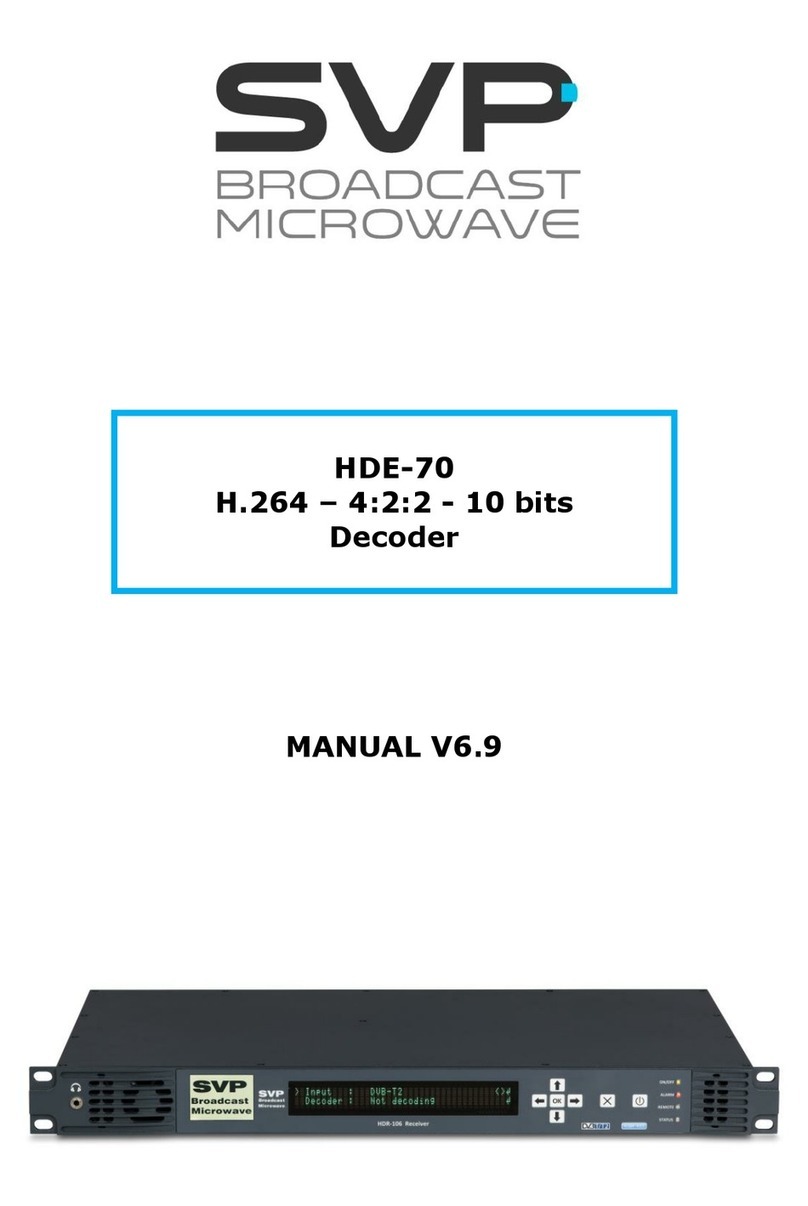2
HENM-70 Encoder & DVB-S2/S Modulator
USER’S MANUAL V5.6
3.5.2.5.1 Alarms..................................................................70
3.5.2.5.2 Monitor.................................................................71
3.5.2.5.3 Webserver & SNMP ................................................72
3.5.2.5.4 Miscellaneous ........................................................74
3.5.2.5.5 Firmware ..............................................................76
3.5.2.5.6 BUC S/S2 Unit .......................................................80
Chapter 4: GPS Application .................................................................81
4.1 Introduction...........................................................................81
4.2 Main Screen...........................................................................81
4.3 GPS transmitter screen ...........................................................82
4.4 GPS IRD-70 decoder screen .....................................................83
4.5 Application example................................................................85
Chapter 5: Web Server.......................................................................87
5.1 Introduction...........................................................................87
5.2 Web Page Overview ................................................................89
5.2.1 ENCODER.........................................................................90
5.2.1.1 Video .........................................................................90
5.2.1.2 Audio .........................................................................91
5.2.1.3 Data ..........................................................................92
5.2.1.3.1 GPS......................................................................93
5.2.1.4 TS Parameters ............................................................94
5.2.1.5 Output .......................................................................95
5.2.2 MOD_RF ..........................................................................96
5.2.2.1 DVB-S2 ......................................................................97
5.2.2.2 DVB-S........................................................................99
5.2.3 TSoIP ............................................................................ 101
5.2.3.1 IP Output ................................................................. 102
5.2.3.2 IP Input ................................................................... 103
5.2.4 CA-BISS ........................................................................ 106
5.2.5 UNIT ............................................................................. 107
5.2.5.1 LEDs Status (reading parameters) ............................... 108
5.2.5.2 Alarms (reading parameter)........................................ 108
5.2.5.3 Configuration ............................................................ 109
5.2.5.4 Monitor .................................................................... 110
5.3 Web Page Setup Notes .......................................................... 111
5.4 SNMP.................................................................................. 111
5.4.1 SNMP commands ............................................................ 112
Chapter 6: Equipment Installation ..................................................... 113
6.1 Introduction......................................................................... 113
6.2 Connections ......................................................................... 113
6.2.1 Power supply.................................................................. 115
AC Power supply ..................................................................... 115
DC Power supply ..................................................................... 116
6.2.2 Intermediate frequency ................................................... 118
DVB-S2 output........................................................................ 118
Intermediate frequency output IF .............................................. 118




























